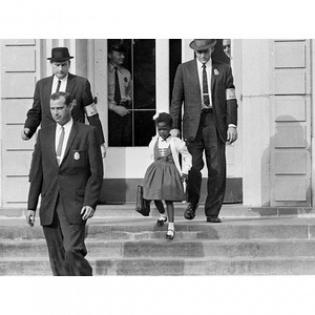Challenging Social Boundaries
What is a world citizen's responsibility to promote and advocate for justice and kindness?
Photo credit: The U.S. Civil Rights Movement by U.S. Embassy The Hague is licensed under
Historical incidents of race discrimination and public protest have parallels to present day social barriers and the need for social action. Define stereotype, discrimination, racism, and prejudice and brainstorm a social action plan to heal racism. As a service action, organize a “Mix It Up Day!” with the intention of breaking down social and racial barriers in the school lunchroom.
Through two readings, we learn about racist attitudes and practices in the transportation systems that were supported by Jim Crow laws in the 1940s South. When Rosa Parks refused to give up her seat, it was a final stand after years of injustice and continuous acts of protest. We learn how her social action was part of combined efforts and ultimately changed public transportation laws.
This lesson describes a psychological awareness of the connection between racism and self-betrayal and self-deception. When we recognize that going against our best judgment leads to self-betrayal, it can help us act with integrity in many situations.
From history we know that working in community (not on our own) is the best way to make change. Young people explore the work of nonprofits related to equity and social justice.
Learners will sponsor Mix It Up Day, a national project to promote diversity within a school environment. Learners will experience roles as private citizens attempting to change behavior.
